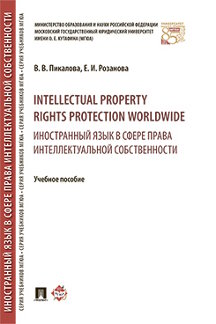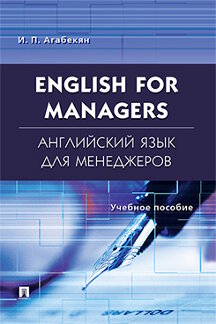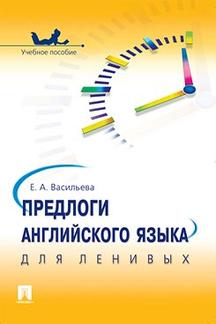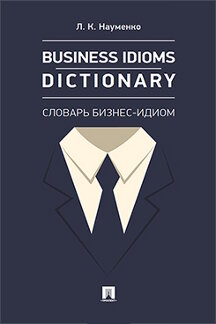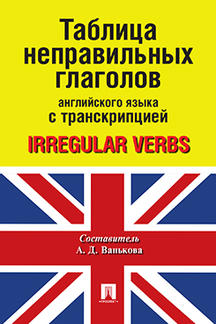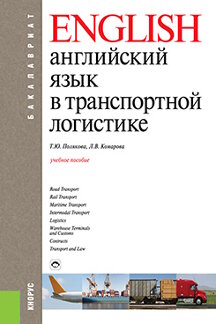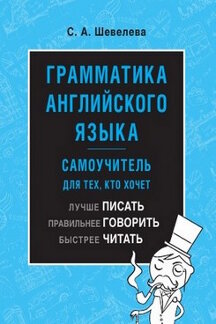|
|
ОглавлениеUnit 2 IP: International Legal Environment Unit 3 Copyright Law: Rationale of copyright. Obtaining and enforcing copyright Unit 4 Copyright Law: Moral and Economic rights Unit 5 Copyright Protection of Computer Software Unit 6 Copyright Law: “Whose format is it anyway?” Unit 7 Trademarks: definition, functions, registration and use Unit 8 IP and Business: Trademark Coexistence Unit 11 Patent Law: Patent application Unit 13 Role of Intellectual Property in Enhancing the Competitiveness of the Tourism Industry Для бесплатного чтения доступна только часть главы! Для чтения полной версии необходимо приобрести книгуUnit 3 Copyright Law: Rationale of copyright. Obtaining and enforcing copyrightVOCABULARYembody in a tangible form of expression — воплощать в материальную форму copyright notice — знак охраны авторского права substantial similarity — существенное сходство derivative work — производная работа moral rights — личные неимущественные права right of publication — право на опубликование right of integrity — право на неприкосновенность произведения personality rights — личные неимущественные права right of privacy — право на сохранение конфиденциальности resale right — право вторичной продажи, право следования shop right — право нанимателя на служебное изобретение работника outright transfer — прямая передача earn return — получать прибыль be based on the material — быть выраженным в какой-либо материальной форме false attribution of authorship — незаконное присвоение авторства overlapping laws — частично пересекающиеся законы by operation of law — в силу закона within the scope of employment — в рамках трудовых отношений transferor — лицо, передающее право; цедент READING 1Exercise 1. Read through the text and answer the questions. 1. What is copyright? 2. What are the subjects of copyright? 3. What are the differences in subject matter of the Berne and Rome Conventions? 4. What does copyright protect? Copyright is a set of exclusive rights regulating the use of a particular expression of an idea or information. At its most general, it is literally “the right to copy” an original creation. In most cases, these rights are of limited duration. The symbol for copyright is ©, and in some jurisdictions may alternatively be written as either (c) or ©. Copyright may subsist in a wide range of creative, intellectual, or artistic forms or “works”. Literary, dramatic, musical and artistic works and films will be collectively referred to as “author works”, and sound recordings, broadcasts will be grouped as “media works”. Designs or industrial designs may have separate or overlapping laws applied to them in some jurisdictions. The distinction is derived from the international structure of copyright: the Berne Convention for literary and artistic productions, and the Rome Convention for sound recordings and broadcasts. The distinction rests on a number of points, of which the most important conceptually is the idea that the second group relies essentially on the operation of machinery and technology where the first depends upon one or more individuals as creator. Another element may be that the author works content is protected, whereas with media works it is media itself, or the signal, that is protected rather than the material embodied within it. So a song or music have author copyright, while the sound recordings and broadcasts containing them are purely media ones. Copyright is one of the laws covered by the umbrella term intellectual property. Copyright law covers only the form or manner in which ideas or information have been manifested, the “form of material expression”. It is not designed or intended to cover the actual ideas, concepts, facts, styles, or techniques which may be embodied in or represented by the copyright work. For example, the copyright which subsists in relation to a Mickey Mouse cartoon prohibits unauthorized parties from distributing copies of the cartoon or creating derivative works which copy or mimic Disney’s particular anthropomorphic mouse, but does not prohibit the creation of artistic works about anthropomorphic mice in general, so long as they are sufficiently different to not be deemed imitative of the original. In some jurisdictions, copyright law provides scope for satirical or interpretative works which themselves may be copyrighted. Other laws may impose legal restrictions on reproduction or use where copyright does not — such as trademarks and patents. Copyright laws are standardized through international conventions such as the Berne Convention in some countries and are required by international organizations such as the European Union or the World Trade Organization from their member states. (Contemporary Intellectual Property Law and Policy) Exercise 2. Read through the text and fill in the gaps with appropriate words and phrases. Say whether the following statements are true or false. If they are false correct them, if they are true prove it.
1. Under the Berne Convention, an author has to apply for a copyright in countries adhering to the Berne Convention. 2. An author is entitled to all copyrights in the fixed work until the copyright expires. 3. The principle of national treatment means that states enter into negotiations for the mutual recognition and enforcement of foreigners’ copyrights. 4. The Berne Convention enables the reproduction of literary and artistic works without the right holder’s prior permission. The Berne Convention The major problem which domestic legislation alone could not solve was unauthorised activity outside the UK. Copyright remained entirely limited to the territory in which it was granted, leaving authors and publishers unprotected beyond their home shores. As international markets for creative output began to take off in the course of the 19th century, so states began to enter into negotiations for the 1. … of foreigners’ copyrights. The 1886 Berne Convention first established recognition of copyrights among sovereign nations, 2. ... Under the Berne Convention, copyrights for creative works do not have to be asserted or declared, as they are automatically 3. … an author need not “register” or “apply for” a copyright in countries adhering to the Berne Convention. As soon as a work is “fixed”, that is, written or recorded on some physical medium, its author is automatically 4. … in the work, and to any derivative works unless and until the author explicitly disclaims them, or until the 5. …. This principle is called a focus on the author as the key figure in copyright. The Berne Convention also resulted in foreign authors 6. … to domestic authors, in any country signed onto the Convention — it’s the principle of national treatment. Another main feature of the Berne Convention is the possibility of exceptions to copyright, enabling the reproduction of literary and artistic works without the right holder’s prior permission. The UK signed the Berne Convention in 1887 but did not 7. ... it until 100 years later with the passage of the Copyright, Designs and Patents Act of 1988. The USA did not sign the Berne Convention until 1989. The regulations of the Berne Convention are incorporated into the World Trade Organization’s TRIPS agreement, thus making the Berne Convention practically world-wide. (Contemporary Intellectual Property Law and Policy) VOCABULARY IN USEExercise 3. Discuss the following phrases in pairs and explain them in your own words. С книгой "Intellectual property rights protection worldwide = Иностранный язык в сфере права интеллектуальной собственности. Учебное пособие" автора Пикалова В.В., Розанова Е.И. также читают:Внимание! Авторские права на книгу "Intellectual property rights protection worldwide = Иностранный язык в сфере права интеллектуальной собственности. Учебное пособие" (Пикалова В.В., Розанова Е.И.) охраняются законодательством! |
|||||||||||||||||||||||


